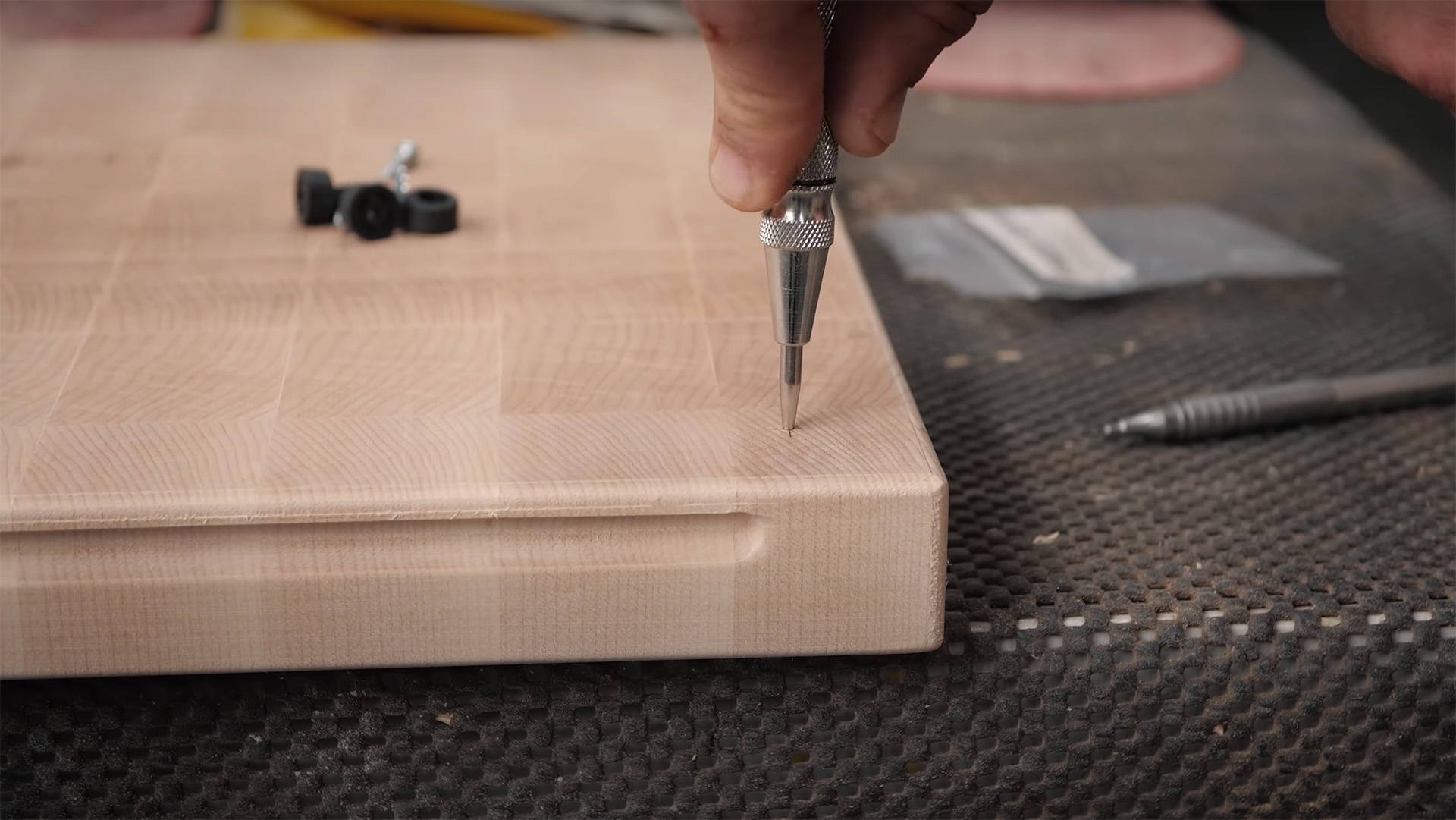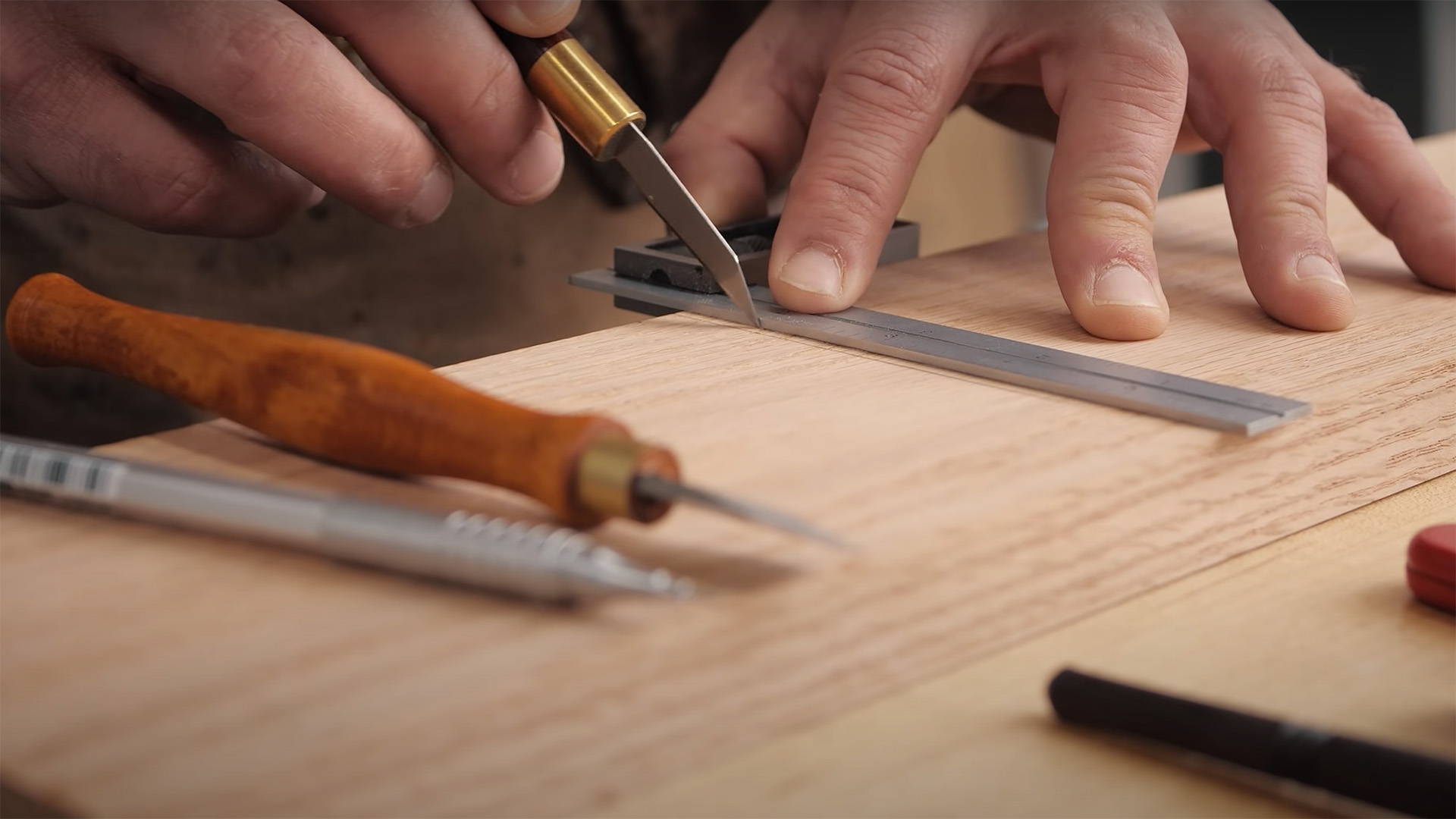Planning projects around wood grain is a sign of woodworking mastery.
And building a grain wrapped box is one of the best ways to start honing that skill.
Think about it.
When you’re first getting started, grain patterns are the least of your worries. You’re just trying to make something that looks halfway decent and doesn’t fall apart.
But as you grow in the craft, you develop the bandwidth to focus on the finer details.
And grain wrapping is that attention to detail that shows real intent.
The problem is, a lot of people get grain wrapping wrong — mostly because they’re missing one crucial step.
So today, I’m outlining the 5 basic steps for building grain wrapped boxes the right way…
And you might be surprised by just how easy it is.
STEP 1: SELECT AND MILL A BOARD
Here’s the important part:
Your board needs to be over twice as thick as the final thickness you’re after for the box sides.
That’s because you’re going to resaw it (cut it in half through its thickness) in the next step.
I say over twice as thick because you’re going to lose some material to resawing… and potential remilling.
The length of the board should roughly equal 1 short side + 1 long side of your box.
(Part of the beauty of resawing is it allows you to build boxes with shorter boards — since you’re essentially doubling its length.)
In terms of selection, wild grain patterns are great for grain wrapped boxes.
So if you’ve got a piece of quarter sawn lumber laying around, this could be the time to use it.
(Also note: rift and quarter sawn lumber will be less susceptible to cupping after resawing).
Once your board’s picked, mill it square on all 4 sides.
You can either trim it to length now, which I recommend (1 long side + 1 short side + blade kerf), or leave it for later on.
STEP 2: RESAW THE BOARD
Resawing is the secret to full, 360° grain wraps… and what a lot of people get wrong.
Without resawing, a box will always have one corner where the grain doesn’t line up.
That might be fine for a lot of projects. But if you want seamless grain lines that go all the way around in an endless, flowing motion — don’t skip this step.
Resawing is typically done on the bandsaw, but there are other ways to get it done (read this to learn all about resawing).
The thing to keep in mind is that your resawn boards are likely to cup. Especially if you’re using flat-sawn lumber.
Rift and quarter sawn lumber are less susceptible. But if they do cup, try clamping them together with the previous “inside” faces pointing away from each other and leaving it overnight.
You might have to do another round of flattening.
But once your boards are stable, you’re ready for the next step.
STEP 3: PLAN AND LABEL THE BOX SIDES
Time to start playing with the grain.
Lay your two resawn boards side by side at their end grain edges so the grain runs continuously from one to the other.
(You basically have two options here).
You’ll now decide which sides will be the show faces — and where you’ll make your cuts.
Remember, each board represents a long side and short side of your box (unless you want it to be perfectly square). And each board also represents two adjacent sides.
I like to roughly layout where I’ll cut the box sides with a pencil. This doesn’t need to be accurate — it’s just to make sure you don’t get confused.
With your rough cut lines drawn out, label all mating edges..
I typically label mating edges “A1-A1, B1-B1, C1-C1.” The far ends that aren’t touching will be mating edges as well — and I’ll label them “D1-D1.”
(The image above obviously isn't grain wrapped, but it illustrates the point.)
To be extra safe, you can label the backs A2-A2, etc. Just make sure the letters match the opposite face — and keep the orientation consistent so you always know which side is up.
Now for the actual cutting.
STEP 4: CUT THE BOX SIDES
If you need to cut the resawn boards to length, do it now — but be careful.
When you trim one board, trim the mating edge of the other board the exact same amount to maintain the grain wrap.
Again, one board will equal 1 long side + 1 short side of your box, plus material lost while cutting.
On that note, the thinner the blade you use for these cuts, the better.
A smaller kerf means less material lost. And as a result, a less interrupted flow of grain.
I’ll sometimes even throw an 8” blade with an extra thin kerf into my table saw.
Finally, set up a stop block to cut either the long side or short side to length.
It doesn’t matter which you start with. But what DOES matter is that you use the same stop block setup for both boards.
That way you’ll know your box sides are the exact same length.
So if you set up the stop block for the long side, cut the first board, then the second with that same setup. Use your pencil lines to make sure you get it right.
You’ll now have 4 box sides that come together with perfect, uninterrupted grain lines.
Again, make sure the mating edges are labeled!
STEP 5: BUILD YOUR BOX
With the sides labeled and cut to length, you can now build your box any way you like.
Just always keep in mind the orientation and mating edges of the sides as you cut the joinery.
You can use any joinery style…
But nothing shows off a grain wrap like clean miters.
With zero end grain showing, the lines look totally seamless.
But don’t let that dissuade you from using dovetails, box joints, or other joinery styles.
The beauty of the grain wrap will still shine.
WRAP YOUR BRAIN AROUND GRAIN WRAPS
Learning how to make grain wrapped boxes is an amazing way to show off your woodworking mastery.
The seamless lines will have non-woodworkers scratching their heads…
And seasoned pros nodding in appreciation.
Need some tips for making mitered boxes? Read this.
Got any of your own grain wrapping tips? Let us know in the comments below!
Follow us on Instagram @katzmosestools, on TikTok @katzmoseswoodworking, and check out my YouTube channel for more great woodworking content...
And as always, STAY SAFE IN THE SHOP!











1 comment
Henry
Cluster Rush is a fast-paced game where players must jump from truck to truck, navigating through challenging obstacles for high scores. https://clusterrush.pages.dev/
Cluster Rush is a fast-paced game where players must jump from truck to truck, navigating through challenging obstacles for high scores. https://clusterrush.pages.dev/